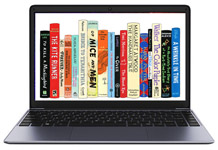
E-JASL: Electronic Journal of Academic and Special Librarianship (1999-2009, Volumes 1-10)
Date of this Version
Spring 2009
Document Type
Article
Citation
Electronic Journal of Academic and Special Librarianship (Spring 2009) 10(1). Also available at http://southernlibrarianship.icaap.org/content/v10n01/chen_c01.html.
Abstract
Abstract
To help enhance the delivery of materials to end users, Taiwanese libraries launched four major programs to disseminate information and promote the widespread public usage of library materials. These programs, BookStart, Book Express Service, Cross Campus Delivery, and Delivery for the Visually Impaired, have proven to be quite successful in reaching their diverse population targets by addressing the specific needs for information services of those populations. This paper will focus on the various operational aspects of those outreach projects, their accomplishment, and future prospects.
The BookStart program brings books to parents and their children so that they may benefit from materials pertaining to parenting and children’s reading needs. The Book Express Service sends books directly to homes, a great convenience for housebound people or those who are too busy to visit a library in person. Cross Campus Delivery, in effect, means cash savings to students requesting and obtaining books other than those readily available to them in their local library. Delivery for the Visually Impaired includes Braille and audio materials made accessible to the visually impaired throughout the entire national library networking system.
These four programs portray an overall picture of our library delivery services in Taiwan. As a whole, they are representative of the pro-active role libraries in Taiwan are taking in meeting the public’s needs for information. The performance of these four programs has been remarkable in “outreaching” those with special needs. What is shared below is our experience in implementing these programs and the obstacles we still need to overcome.
Included in
Collection Development and Management Commons, Communication Technology and New Media Commons, Scholarly Communication Commons, Scholarly Publishing Commons


Comments
Copyright 2009, the authors, Used by permission.